#economic growth
Text
"India’s announcement that it aims to reach net zero emissions by 2070 and to meet fifty percent of its electricity requirements from renewable energy sources by 2030 is a hugely significant moment for the global fight against climate change. India is pioneering a new model of economic development that could avoid the carbon-intensive approaches that many countries have pursued in the past – and provide a blueprint for other developing economies.
The scale of transformation in India is stunning. Its economic growth has been among the highest in the world over the past two decades, lifting of millions of people out of poverty. Every year, India adds a city the size of London to its urban population, involving vast construction of new buildings, factories and transportation networks. Coal and oil have so far served as bedrocks of India’s industrial growth and modernisation, giving a rising number of Indian people access to modern energy services. This includes adding new electricity connections for 50 million citizens each year over the past decade.
The rapid growth in fossil energy consumption has also meant India’s annual CO2 emissions have risen to become the third highest in the world. However, India’s CO2 emissions per person put it near the bottom of the world’s emitters, and they are lower still if you consider historical emissions per person. The same is true of energy consumption: the average household in India consumes a tenth as much electricity as the average household in the United States.
India’s sheer size and its huge scope for growth means that its energy demand is set to grow by more than that of any other country in the coming decades. In a pathway to net zero emissions by 2070, we estimate that most of the growth in energy demand this decade would already have to be met with low-carbon energy sources. It therefore makes sense that Prime Minister Narendra Modi has announced more ambitious targets for 2030, including installing 500 gigawatts of renewable energy capacity, reducing the emissions intensity of its economy by 45%, and reducing a billion tonnes of CO2.
These targets are formidable, but the good news is that the clean energy transition in India is already well underway. It has overachieved its commitment made at COP 21- Paris Summit [a.k.a. 2015, at the same conference that produced the Paris Agreement] by already meeting 40% of its power capacity from non-fossil fuels- almost nine years ahead of its commitment, and the share of solar and wind in India’s energy mix have grown phenomenally. Owing to technological developments, steady policy support, and a vibrant private sector, solar power plants are cheaper to build than coal ones. Renewable electricity is growing at a faster rate in India than any other major economy, with new capacity additions on track to double by 2026...
Subsidies for petrol and diesel were removed in the early 2010s, and subsidies for electric vehicles were introduced in 2019. India’s robust energy efficiency programme has been successful in reducing energy use and emissions from buildings, transport and major industries. Government efforts to provide millions of households with fuel gas for cooking and heating are enabling a steady transition away from the use of traditional biomass such as burning wood. India is also laying the groundwork to scale up important emerging technologies such as hydrogen, battery storage, and low-carbon steel, cement and fertilisers..."
-via IEA (International Energy Agency), January 10, 2022
Note: And since that's a little old, here's an update to show that progress is still going strong:
-via Economic Times: EnergyWorld, March 10, 2023
#india#solar power#renewable energy#green energy#sustainability#wind power#population grown#economic growth#developing economies#renewable electricity#carbon emissions#good news#hope#hope posting
856 notes
·
View notes
Text
One simple way to look at it is to take the rate of emissions reductions achieved in countries that have successfully decoupled, and see how long it would take for them to fully decarbonize. That’s essentially what Jefim Vogel and Jason Hickel — researchers at the University of Leeds and the Autonomous University of Barcelona, respectively — did in the Lancet Planetary Health study. They found that, if 11 high-income countries continued their achieved rates of emissions reduction, it would take them more than 220 years to cut emissions by 95 percent — far longer than the net-zero-by-2050 timeline called for by climate experts.
“The decoupling rates achieved in high-income countries are inadequate for meeting the climate and equity commitments of the Paris Agreement and cannot legitimately be considered green,” the authors wrote. In an interview with Grist, Vogel likened optimism around gradual decoupling to saying, “Don’t worry, we’re slowing down,” while the Titanic races toward an iceberg.
[...]
“Absolute decoupling is not sufficient to avoid consuming the remaining CO2 emission budget under the global warming limit of 1.5 degrees C or 2 degrees C and to avoid climate breakdown,” concluded the Intergovernmental Panel on Climate Change in its most recent assessment.
Instead of making growth greener, some economists call for a whole new economic paradigm to address converging social and ecological crises. They call it “post-growth,” referring to a reorientation away from GDP growth and toward other metrics, like human well-being and ecological sustainability. Essentially, they want to prioritize people and the planet and not care so much what the stock market is doing. This would more or less free countries from the decoupling dilemma, since it eliminates the growth imperative altogether.
Raworth, the professor at Amsterdam University of Applied Sciences, calls her version of the post-growth agenda “doughnut economics.” In this visual model, the inner ring of the doughnut represents the minimum amount of economic activity needed to satisfy basic needs like access to food, water, and shelter. The outer ring signifies the upper limits of natural resource use that the Earth can sustain. The goal, she argues, is for economies to exist between the inner and outer rings of the doughnut, maintaining adequate living standards without surpassing planetary limits.
“Our economies need to bring us into the doughnut,” Raworth told Grist. “Whether GDP grows needs to be a secondary concern.”
Vogel and Hickel go a little further. They call for a planned, deliberate reduction of carbon- or energy-intensive production and consumption in high-income countries, a concept known as “degrowth.” The rationale is that much of the energy and resources used in high-income countries goes toward carbon-intensive products that don’t contribute to human welfare, like industrial meat and dairy, fast fashion, weapons, and private jets. Tamping down this “less necessary” consumption could slash greenhouse gas emissions, while lower energy demand could make it more feasible to build and maintain enough energy infrastructure. Some research suggests that reducing energy demand could limit global warming to 1.5 degrees C without relying on unproven technologies to draw carbon out of the atmosphere.
74 notes
·
View notes
Video
Capitalism and poverty
#tiktok#poverty#global capitalism#capitalism is trash#capitalism is violence#income inequality#wealth inequality#inequality#china#history#economics#economy#socialism#communism#extreme poverty#economic growth
181 notes
·
View notes
Photo
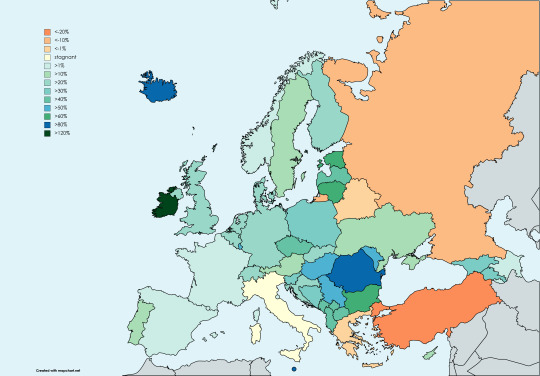
Economic growth in Europe over 10yrs
84 notes
·
View notes
Text
One diagram in economic theory is so dangerous that it is never actually drawn: the long-term path of GDP growth. Mainstream economics views endless economic growth as a must, but nothing in nature grows forever, and the attempt to buck that trend is raising tough questions in high-income but low-growth countries. It may not be hard to give up having GDP growth as an economic goal, but it is going to be far harder to overcome our addiction to it. Today we have economies that need to grow, whether or not they make us thrive; what we need are economies that make us thrive, whether or not they grow. That radical flip in perspective invites us to become agnostic about growth and to explore how economies that are currently financially, politically and socially addicted to growth could learn to live with or without it.
-Kate Raworth, Doughnut Economics: Seven Ways to Think Like a 21st Century Economist
15 notes
·
View notes
Text
The Magic of Street-Side Trees. Beauty, Coolness, and Urban Prosperity.

The beauty, coolness, and urban prosperity brought by street-side trees.
Trees lining urban streets are integral elements of the urban landscape, serving multiple ecological roles and socio-economic functions. In general, incorporating trees along the roads in urban areas can elevate the aesthetic appeal, regulate temperatures, and foster prosperity growth. And if our goal is to enhance the role of cities in driving economic growth and fully utilizing human resources, then we must prioritize making tangible improvements to urban environments.

Trees are crucial components for creating appealing and hospitable urban environments that enhance citizens' psychological and social well-being. They play a vital role in reducing air temperature and humidity, which helps alleviate the effects of heat waves and global warming. Trees bear witness to the history, culture, and identity of cities, which they preserve and pass on to future generations. In addition to their undeniable beauty, trees are valuable allies in the fight against climate change.
They provide a range of local benefits that are often ignored beyond the global role of absorbing carbon dioxide. This article aims to increase awareness among readers about the importance of trees for cities and the planet. It seeks to motivate all of us to value, preserve, and protect the urban tree heritage through a participatory and accountable manner that involves citizens and institutions.

Street-side trees are more than just beautiful to look at. They are an essential resource for cities, providing numerous benefits to residents' health, well-being, and quality of life. In their article on Monocolo, Paolo Massi and Giulia Papaleo highlight the main advantages of trees in urban areas. La magia degli alberi lungo le strade. Bellezza, frescura e prosperità urbana
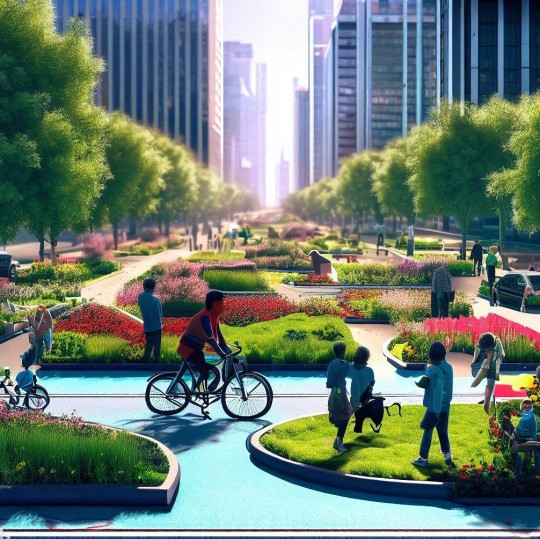
Among the benefits that trees bring to the urban environment, we can mention:
Trees perform ecological, social, and economic functions that contribute to the well-being and development of cities. They help to reduce air pollution by capturing particles, filtering harmful gases, and producing oxygen. Trees also absorb carbon from the atmosphere and store it in their wood, making them beneficial for climate change mitigation. Additionally, trees create shade, cool the air, and reduce energy consumption for cooling buildings. They prevent flooding, improve water quality, and increase biodiversity by providing shelter and food for many species. Trees enhance the urban landscape, mitigate noise, and even increase the value of properties.

Moreover, they promote physical and mental health by stimulating physical activity, reducing stress, and improving mood and concentration.
Therefore, roadside trees are a valuable resource for cities and their inhabitants. It is critical to protect, care for, and increase them through various means, such as public policies, private actions, and guaranteed maintenance over time, recognizing their fundamental role in the quality of urban life so that maintenance, which develops jobs, in particular, is 'guaranteed' over time,

Urban forestation and eco-neighborhoods.
Urban forestation refers to designing and creating green spaces in urban and peri-urban areas to incorporate nature into the landscape. It is important to both develop new green spaces and enhance existing ones.
Eco-neighborhoods serve as an example of sustainable and livable urban environments. They are designed considering the environment and the health of their residents. Sustainability principles are followed to improve the landscape and economic assets of the urban context. The design of an environmentally sustainable neighborhood aims to reduce its environmental impact during construction, throughout its life cycle, and even during decommissioning while prioritizing the comfort of its residents. These neighborhoods are built to improve people's quality of life by emphasizing energy conservation, renewable energy, environmentally friendly materials, reducing water and waste consumption, and promoting sustainable mobility. They are tangible parts of the city that contribute to the well-being of its inhabitants.
In addition, urban forestation is another example of how urban environments can be made more livable and sustainable. We can seamlessly blend nature into the urban landscape by integrating street trees, gardens, and parks. They represent elements of nature that help purify the air we breathe, capturing pollutants, storing carbon, and mitigating the climate of cities.
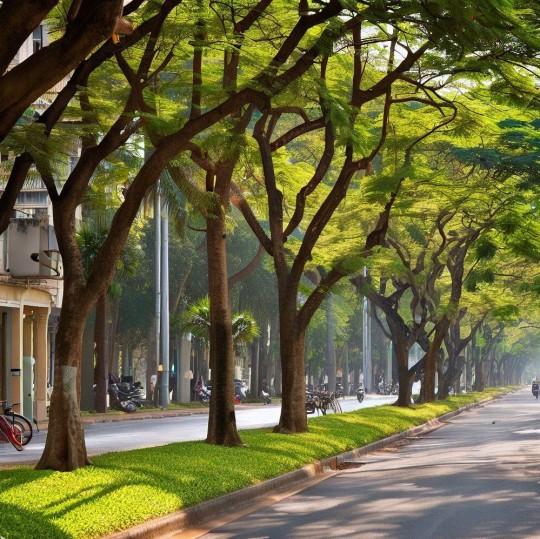
In summary, street-side trees are not just a decorative element but a proper green infrastructure that improves the quality of urban life. Therefore, It is vital to encourage planting, caring for, and preserving trees in urban areas, with the participation of government institutions, businesses, and residents, in order to achieve a shared vision to promote sustainable progress.

🟠 Italiano
Intro
Gli alberi sono elementi essenziali per creare paesaggi urbani attraenti e accoglienti, che favoriscono il benessere psicologico e sociale dei cittadini. contribuiscono a ridurre la temperatura e l'umidità dell'aria, mitigando gli effetti delle ondate di calore e del riscaldamento globale. Essi sono testimoni della storia, della cultura e dell'identità delle città, che conservano e trasmettono alle generazioni future. Alleati nella lotta ai cambiamenti climatici, oltre alla loro innegabile bellezza offrono una serie di benefici locali che spesso tendiamo a trascurare (al di là dei benefici globali di assorbimento dell’anidride carbonica). Questo articolo quindi ha lo scopo di sensibilizzare i lettori sull'importanza degli alberi per le città e per il pianeta, invitandoli a conoscere, apprezzare e tutelare il patrimonio arboreo urbano coinvolgendo i cittadini e le istituzioni in un processo partecipativo e responsabile.
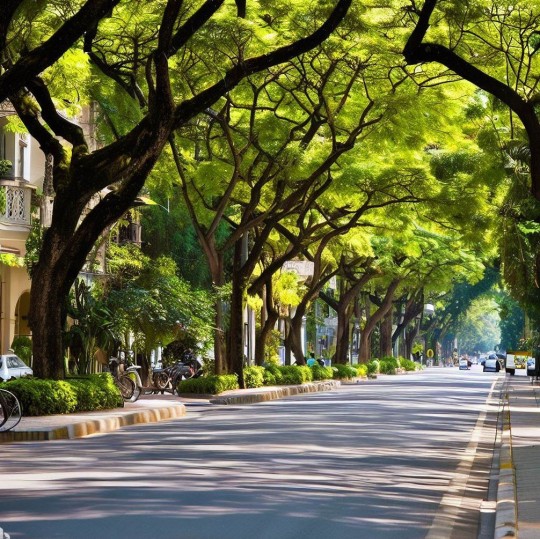
La magia degli alberi lungo le strade. Bellezza, frescura e prosperità urbana.
Gli alberi sono una risorsa preziosa per le città, non solo per il loro contributo alla mitigazione dei cambiamenti climatici, ma anche per i molteplici benefici che apportano alla salute, al benessere e alla qualità della vita dei cittadini. In questo articolo del Monocolo gli autori Paolo Massi e Giulia Papaleo, vogliono illustrare alcuni dei principali vantaggi che gli alberi offrono alle aree urbane e alle persone che le abitano. La magia degli alberi lungo le strade. Bellezza, frescura e prosperità urbana

La magia degli alberi lungo le strade dunque non si limita alla loro estetica. Gli alberi sono elementi essenziali per il benessere e lo sviluppo delle città, in quanto svolgono funzioni ecologiche, sociali ed economiche. Tra i vantaggi che gli alberi apportano all'ambiente urbano, possiamo citare:
Riduzione dell'inquinamento atmosferico: gli alberi catturano le particelle sospese nell'aria, filtrano i gas nocivi e producono ossigeno.
Mitigazione del cambiamento climatico: gli alberi assorbono il carbonio dall'atmosfera e lo immagazzinano nel loro legno, contribuendo a ridurre l'effetto serra.
Regolazione termica: gli alberi creano ombra e rinfrescano l'aria attraverso la traspirazione, diminuendo la temperatura e il consumo energetico per il raffreddamento degli edifici.
Conservazione del suolo e dell'acqua: gli alberi riducono l'erosione del suolo, aumentano la sua capacità di infiltrazione e ritardano il deflusso delle acque piovane, prevenendo le inondazioni e migliorando la qualità dell'acqua.
Incremento della biodiversità: gli alberi offrono rifugio e cibo a molte specie animali e vegetali, arricchendo la diversità biologica delle città.
Valorizzazione del paesaggio urbano: gli alberi creano scenari naturali, armonizzano l'architettura, attenuano il rumore e aumentano il valore immobiliare delle proprietà.
Promozione della salute e del benessere umano: gli alberi favoriscono la salute fisica e mentale delle persone, stimolando l'attività fisica, riducendo lo stress, migliorando l'umore e la concentrazione.
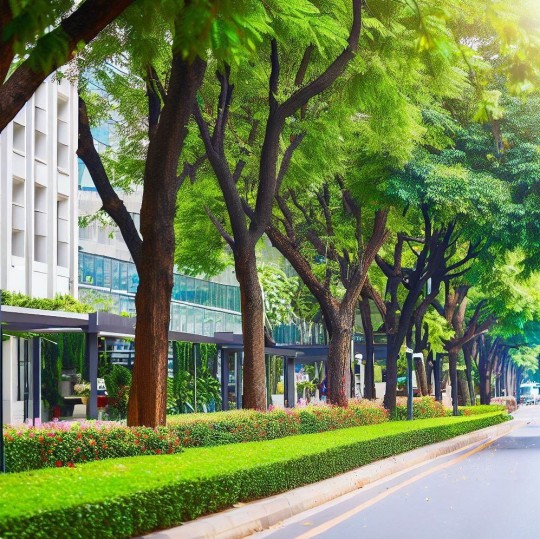
Gli alberi e le aiuole a verde lungo le strade sono quindi una risorsa preziosa per le città e i loro abitanti. Per questo motivo, è importante proteggerli, curarli e incrementarli, attraverso politiche pubbliche e azioni private che ne riconoscano il ruolo fondamentale per la qualità della vita urbana affinché la manutenzione, che sviluppa posti di lavoro, in particolare venga 'garantita' nel tempo.
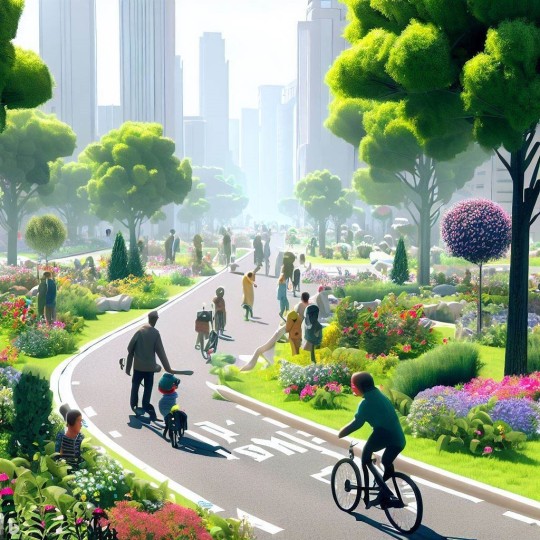
La forestazione urbana e gli ecoquartieri
Con il termine forestazione urbana si intende la progettazione e lo sviluppo di aree verdi urbane e periurbane, facendo della natura un'importante protagonista di questo paesaggio. Chiaramente è importante non solo progettare e sviluppare nuove aree verdi, ma anche rivalorizzare e riappropriarsi di quelle esistenti.
Certo! Gli ecoquartieri sono un esempio di ambienti urbani sostenibili e vivibili. Sono quartieri costruiti nel rispetto dell’equilibrio ambientale e della salute delle persone che vi abitano. Sono conformi ai principi della sostenibilità e puntano alla valorizzazione del patrimonio paesaggistico ed economico del contesto urbano in cui sono inseriti. La progettazione di un quartiere ecosostenibile punta a ridurne l’impatto ambientale: dalla fase di costruzione, al ciclo di vita, fino alla sua dismissione, senza mai dimenticare il comfort di chi lo vive. Si tratta di vere e proprie porzioni di città edificate con l’obiettivo di innalzare il livello di qualità della vita e sono realizzate ponendo l’accento su: risparmio energetico; uso delle energie rinnovabili e di materiale ecologico; riduzione del consumo di acqua e di rifiuti; promozione della mobilità sostenibile.
Inoltre, la forestazione urbana è un altro esempio di come gli ambienti urbani possono essere resi più vivibili e sostenibili. Le alberature stradali, i giardini e i parchi urbani rappresentano degli elementi di natura che contribuiscono a purificare l’aria che respiriamo, catturando sostanze inquinanti, immagazzinando carbonio e mitigando il clima delle città.
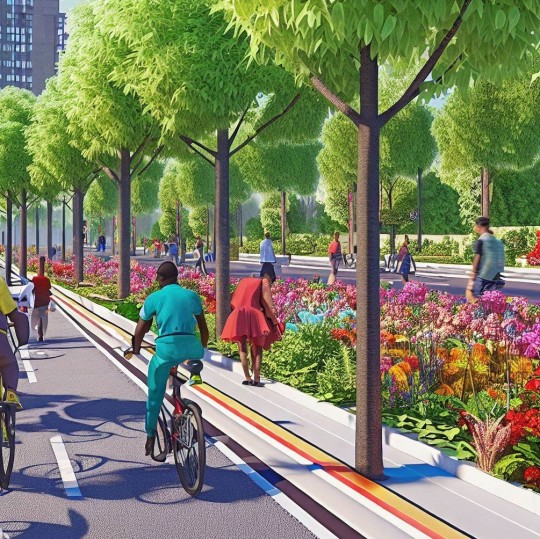
Come si può notare, gli alberi lungo le strade non sono solo un elemento decorativo, ma una vera e propria infrastruttura verde che migliora la qualità della vita urbana. Per questo motivo, è importante promuovere la piantumazione, la manutenzione e la protezione degli alberi nelle città, coinvolgendo le amministrazioni pubbliche, le imprese e i cittadini in una visione condivisa di sviluppo sostenibile.
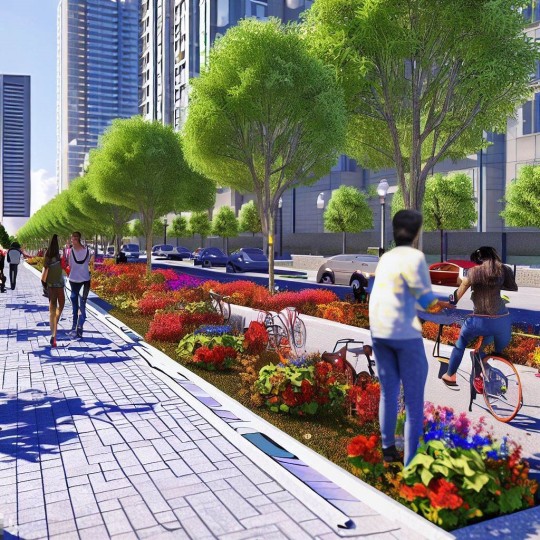
images created by The Board Behind © 2023
More related topics on this matter you might like:
Landscape Architecture: self-reflection on improving and enhancing our cities' run-down suburbs. English /Italian
Give color to the city to celebrate the joy of living.
I appreciate your kind presence and attention on this matter. Thank you for joining us today.
⏩ The Board Behind
#the board behind#sviluppo sostenibile#urban environments#urban tree heritage#ecological restoration#social growth#economic growth#city development#well being#urban living#urban life#heat wave#heat islands#sustainable progress#social innovation
11 notes
·
View notes
Text
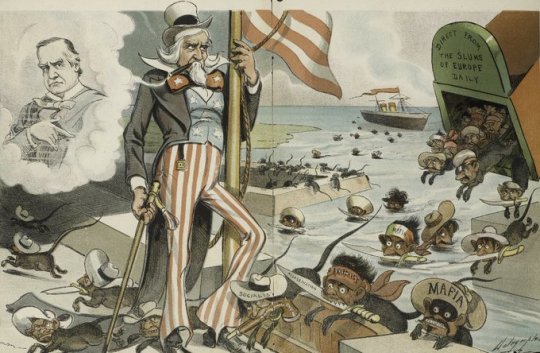
This political cartoon by Louis Dalrymple appeared in Judge magazine in 1903. It depicts European immigrants as rats. Nativism and anti-immigration have a long and sordid history in the United States.
* * * *
LETTERS FROM AN AMERICAN
March 28, 2024
HEATHER COX RICHARDSON
MAR 29, 2024
Yesterday the National Economic Council called a meeting of the Supply Chain Disruptions Task Force, which the Biden-Harris administration launched in 2021, to discuss the impact of the collapse of the Francis Scott Key Bridge and the partial closure of the Port of Baltimore on regional and national supply chains. The task force draws members from the White House and the departments of Transportation, Commerce, Agriculture, Defense, Labor, Health and Human Services, Energy, and Homeland Security. It is focused on coordinating efforts to divert ships to other ports and to minimize impacts to employers and workers, making sure, for example, that dock workers stay on payrolls.
Today, Transportation Secretary Pete Buttigieg convened a meeting of port, labor, and industry partners—ocean carriers, truckers, local business owners, unions, railroads, and so on—to mitigate disruption from the bridge collapse. Representatives came from 40 organizations including American Roll-on Roll-off Carrier; the Georgia Ports Authority; the International Longshoremen’s Association, the International Organization of Masters, Mates and Pilots; John Deere; Maersk; Mercedes-Benz North America Operations; Seabulk Tankers; Under Armour; and the World Shipping Council.
Today the U.S. Department of Transportation’s Federal Highway Administration announced it would make $60 million available immediately to be used as a down payment toward initial costs. Already, though, some Republicans are balking at the idea of using new federal money to rebuild the bridge, saying that lawmakers should simply take the money that has been appropriated for things like electric vehicles, or wait until insurance money comes in from the shipping companies.
In 2007, when a bridge across the Mississippi River in Minneapolis suddenly collapsed, Congress passed funding to rebuild it in days and then-president George W. Bush signed the measure into law within a week of the accident.
In the past days, we have learned that the six maintenance workers killed when the bridge collapsed were all immigrants, natives of Mexico, Honduras, Guatemala, and El Salvador. Around 39% of the workforce in the construction industry around Baltimore and Washington, D.C., about 130,000 people, are immigrants, Scott Dance and María Luisa Paúl reported in the Washington Post yesterday.
Some of the men were undocumented, and all of them were family men who sent money back to their home countries, as well. From Honduras, the nephew of one of the men killed told the Associated Press, “The kind of work he did is what people born in the U.S. won’t do. People like him travel there with a dream. They don’t want to break anything or take anything.”
In the Philadelphia Inquirer today, journalist Will Bunch castigated the right-wing lawmakers and pundits who have whipped up native-born Americans over immigration, calling immigrants sex traffickers and fentanyl dealers, and even “animals.” Bunch illustrated that the reality of what was happening on the Francis Scott Key Bridge when it collapsed creates an opportunity to reframe the immigration debate in the United States.
Last month, Catherine Rampell of the Washington Post noted that immigration is a key reason that the United States experienced greater economic growth than any other nation in the wake of the coronavirus pandemic. The surge of immigration that began in 2022 brought to the U.S. working-age people who, Director Phill Swagel of the nonpartisan Congressional Budget Office wrote, are expected to make the U.S. gross domestic product about $7 trillion larger over the ten years from 2023 to 2034 than it would have been otherwise. Those workers will account for about $1 trillion dollars in revenues.
Curiously, while Republican leaders today are working to outdo each other in their harsh opposition to immigration, it was actually the leaders of the original Republican Party who recognized the power of immigrants to build the country and articulated an economic justification for increased immigration during the nation’s first major anti-immigrant period.
The United States had always been a nation of immigrants, but in the 1840s the failure of the potato crop in Ireland sent at least half a million Irish immigrants to the United States. As they moved into urban ports on the East Coast, especially in Massachusetts and New York, native-born Americans turned against them as competitors for jobs.
The 1850s saw a similar anti-immigrant fury in the new state of California. After the discovery of gold there in 1848, native-born Americans—the so-called Forty Niners—moved to the West Coast. They had no intention of sharing the riches they expected to find. The Indigenous people who lived there had no right to the land under which gold lay, native-born men thought; nor did the Mexicans whose government had sold the land to the U.S. in 1848; nor did the Chileans, who came with mining skills that made them powerful competitors. Above all, native-born Americans resented the Chinese miners who came to work in order to send money home to a land devastated by the first Opium War.
Democrats and the new anti-immigrant American Party (more popularly known as the “Know Nothings” because members claimed to know nothing about the party) turned against the new immigrants, seeing them as competition that would drive down wages. In the 1850s, Know Nothing officials in Massachusetts persecuted Catholics and deported Irish immigrants they believed were paupers. In California the state legislature placed a monthly tax on Mexican and Chinese miners, made unemployment a crime, took from Chinese men the right to testify in court, and finally tried to stop Chinese immigration altogether by taxing shipmasters $50 for each Chinese immigrant they brought.
When the Republicans organized in the 1850s, they saw society differently than the Democrats and the Know Nothings. They argued that society was not made up of a struggle over a limited economic pie, but rather that hardworking individuals would create more than they could consume, thus producing capital that would make the economy grow. The more people a nation had, the stronger it would be.
In 1860 the new party took a stand against the new laws that discriminated against immigrants. Immigrants’ rights should not be “abridged or impaired,” the delegates to its convention declared, adding that they were “in favor of giving a full and efficient protection to the rights of all classes of citizens, whether native or naturalized, both at home and abroad.”
Republicans’ support for immigration only increased during the Civil War. In contrast to the southern enslavers, they wanted to fill the land with people who supported freedom. As one poorly educated man wrote to his senator, “Protect Emegration and that will protect the Territories to Freedom.”
Republicans also wanted to bring as many workers to the country as possible to increase economic development. The war created a huge demand for agricultural products to feed the troops. At the same time, a terrible drought in Europe meant there was money to be made exporting grain. But the war was draining men to the battlefields of Stones River and Gettysburg and to the growing U.S. Navy, leaving farmers with fewer and fewer hands to work the land.
By 1864, Republicans were so strongly in favor of immigration that Congress passed “an Act to Encourage Immigration.” The law permitted immigrants to borrow against future homesteads to fund their voyage to the U.S., appropriated money to provide for impoverished immigrants upon their arrival, and, to undercut Democrats’ accusations that they were simply trying to find men to throw into the grinding war, guaranteed that no immigrant could be drafted until he announced his intention of becoming a citizen.
Support for immigration has waxed and waned repeatedly since then, but as recently as 1989, Republican president Ronald Reagan said: “We lead the world because, unique among nations, we draw our people—our strength—from every country and every corner of the world. And by doing so we continuously renew and enrich our nation…. Thanks to each wave of new arrivals to this land of opportunity, we're a nation forever young, forever bursting with energy and new ideas, and always on the cutting edge, always leading the world to the next frontier. This quality is vital to our future as a nation. If we ever closed the door to new Americans, our leadership in the world would soon be lost.”
The workers who died in the bridge collapse on Tuesday “were not ‘poisoning the blood of our country,’” Will Bunch wrote, quoting Trump; “they were replenishing it…. They may have been born all over the continent, but when these men plunged into our waters on Tuesday, they died as Americans.”
LETTERS FROM AN AMERICAN
HEATHER COX RICHARDSON
#immigration#history#Letters From An American#Heather Cox Richardson#Know Nothings#supply chains#economic growth
3 notes
·
View notes
Text
Yet it is capitalism, with its demands for unlimited maximization of profits and economic growth, that is fundamentally unable to protect the Earth's environment. Both humanity and nature become objects of exploitation under capitalism. Furthermore, the artificial scarcity created by capitalism renders large parts of humanity destitute.
Slow Down by Kohei Saito
#quotes#21st century#nonfiction#kohei saito#slow down#capitalism#capitalism is the problem#environmental damage#poverty#profit#economic growth#artificial scarcity#exploitation
3 notes
·
View notes
Text
Though the central task of this book is to extend our understanding of economic growth beyond the scope of GDP, one aspect of the record of U.S. real GDP growth nevertheless cries for explanation. Why was Total Factor Productivity growth so much more rapid during 1920-1970 than before or since?...
… The surprising answer [of this book] is that both the Great Depression and World War II directly contributed to the Great Leap. Had there been no Great Depression, there would probably have been no New Deal, with its NIRA and Wagner Act that promoted unionization and that both directly and indirectly contributed to a sharp rise in real wages and a shrinkage in average weekly hours. In turn, both higher real wages and shorter hours helped boost productivity growth - higher real wages by promoting substitution from labor to capital during 1937-41 and shorter hours by reducing fatigue and improving efficiency.
Less speculative is the productivity-enhancing learning by doing that occurred during the high-pressure economy of World War II. Production miracles during 1941-45 taught firms and workers how to operate more efficiently, and the lessons of the wartime production miracle were not lost after the war: productivity continued to increase from 1945 to 1950. In addition to the increased efficiency of existing plant and equipment, the federal government financed an entire new part of the manufacturing sector, with newly built plants and newly purchased productive equipment. Chapter 16 shows the staggering amount of this new capital equipment installed during the war - its acquisition cost in real terms was equal to fully half the stock of privately owned equipment that had existed in 1941 and was more modern, and hence more productive, than the old equipment.
The productive efficiency of the new capital installed during 1937-41, as well as during the war itself, brings us full circle to Paul David’s explanation of the long lag between the first electric generating plant in 1882 and the electrification of industry that centered on the period 1919-29. His focus on the 1920s as the breakthrough decade misses the fact that the full force of the expansion of modern equipment, not just in manufacturing, but also in the rest of the economy, was centered in the years 1929-50. Economists are so distracted by the unprecedented slump in output during the depressed years of the 1930s that they forget how much innovation occurred in that decade. Alex Field is responsible for the revival of interest in 1930s innovation, and the present book provides evidence of rapid progress during that decade in many dimensions, including radio, the quality of motion pictures, and a sharp jump in the quality of motor vehicles.
Robert J. Gordon, The Rise and Fall of American Growth
#economic history#economic growth#robert j. gordon#united states#economics#world war 2#world war ii#the great depression#1930s
26 notes
·
View notes
Text
UK may worsen by £311bn by 2035 due to leaving EU – new Brexit report
Brexit has cost the UK £140bn so far, according to a new analysis. The new report predicts the country may be worse off by £311bn by the middle of the next decade, Sky News reports.
Economists and analysts at Cambridge Econometrics, commissioned by London Mayor Sadiq Khan, modelled the country’s economy if it had not quit the EU. This was compared with data published by the Office for Budget of Responsibility in March 2023 and projections based on that data.
According to the report’s findings, the country faces slowing economic growth, declining employment, a strong negative impact on investment, falling imports, and a widening gap between London and the rest of the UK.
Read more HERE

#world news#world politics#news#europe#european news#uk politics#uk news#england#united kingdom#london#brexit#economy#world economy#economic growth#economics
3 notes
·
View notes
Text
"Money (the blood) and economic growth (the body) constitute a defective myth because they can provide no expiation of guilt — in Buddhist terms, no resolution of lack. Our new holy of holies, the true temple of modern humanity, is the stock market, and our rite of worship is communing with the Dow Jones average. In return, we receive the kiss of profits and the promise of more to come, but there is no atonement in this. Of course, insofar as we have lost belief in sin, we no longer see anything to atone for, which means we end up unconsciously atoning in the only way we know how, working hard to acquire all those things that society tells us are important and will make us happy. Then we cannot understand why they do not make us happy, why they do not resolve our sense of lack. The reason can only be that we do not yet have enough. 'But the fact is that the human animal is distinctively characterized, as a species and from the start, by the drive to produce a surplus. There is something in the human psyche which commits man to nonenjoyment, to work.' Where are we all going so eagerly? 'Having no real aim, acquisitiveness, as Aristotle correctly said, has no limit.' Not to anywhere but from something, which is why there can be no end to it as long as that something is our own lack shadow. 'Economies, archaic and civilized, are ultimately driven by that flight from death which turns life into death-in-life.' Or by that flight from emptiness that makes life empty: by an intuition of nothingness that, when repressed, only deepens my sense that there is something very wrong with me.
In Buddhist terms, then, money symbolizes becoming real, but since we never quite become real we only make our sense of lack more real. We end up in infinite deferral, for those chips we have accumulated can never be cashed in. The moment we do so, the illusion that money can resolve lack is dispelled; we are left more empty and lack-ridden than before, being deprived of our fantasy for escaping lack. We unconsciously suspect and fear this; the only answer is to flee faster into the future. This points to the fundamental defect of any economic system that requires continual growth to survive: it is based not on needs but on fear, for it feeds on and feeds our sense of lack. In sum, our preoccupation with manipulating the purest symbol [money], which we suppose to be the means of solving the problem of life, turns out to be a symptom of the problem."
- David Loy, from "Buddhism and Money: The Repression of Emptiness Today." Buddhist Ethics and Modern Society: An International Symposium, edited by Charles Wei-hsun Fu and Sandra A. Wawrytko, 1991.
#david loy#quote#quotations#anthropology#psychology#psychoanalysis#buddhism#neoliberalism#capitalism#economic growth#economics#lack#consumerism
6 notes
·
View notes
Text
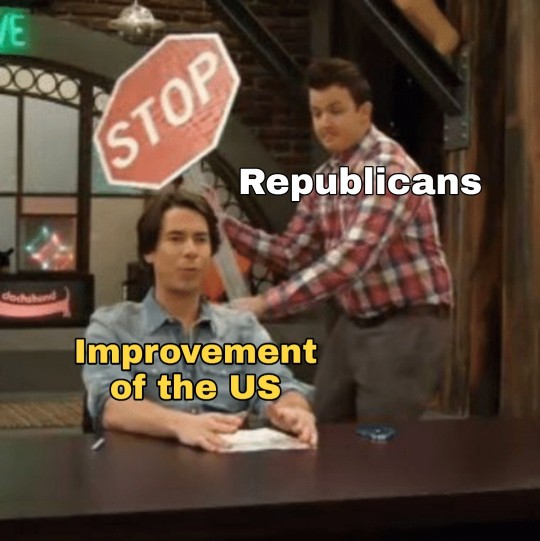

President Joe Biden held a White House event on Friday to sign an executive order on abortion access, but before getting to the topic at hand, the Democrat wanted to focus some attention on an unrelated matter: the latest good news on job creation. From Biden’s remarks:
“Today, the Labor Department reported that we added 372,000 jobs last month — 372,000. Here’s why it’s important: Our private sector has now have recovered all the jobs lost during the pandemic and added jobs on top of that. We have more Americans working today in the private sector than any day under my predecessor, more today than any time in American history — today. In the second quarter of this year, we created more jobs than any quarter under any of my predecessors in nearly 40 years before the pandemic.”
It was tough to blame the president for wanting to highlight the good news. For one thing, as his approval rating sinks, it stands to reason that the White House would want to tout good news about such an important issue. For another, much of the public probably doesn’t realize that the job market has soared with unexpected and unpredicted strength under Biden, and the unemployment rate is lower now than at any point throughout the 1970s, 1980s, or 1990s.
What’s more, as we discussed last week, the economy has created 2.63 million jobs so far in 2022, and the year is only half-over. By any fair measure, that’s an extraordinary total, more in line with what we’d expect to see in a full year. In fact, more jobs have been created in the last six months than in any full year of Donald Trump’s term.
It was against this backdrop that House and Senate Republican leaders said ... nothing. The GOP has largely decided to pretend not to notice job growth at all.
Circling back to our recent coverage, it seemed at least possible leading Republican officials would argue that Democrats don’t deserve credit for the economic recovery. Or perhaps they’d argue that robust job growth was inevitable after the 2020 recession. Maybe they’d even try to say that Trump was somehow responsible for creating economic conditions he had nothing to do with.
But Senate Minority Leader Mitch McConnell and House Minority Leader Kevin McCarthy instead ignored the economic news altogether: No press releases, no tweets, and no public comments. They literally found themselves speechless — just like last month and the month before that and the month before that.
As regular readers may recall, it was more than a year ago when we saw the worst month for job growth since Biden’s inauguration: In April 2021, the economy created 269,000 jobs. Under normal circumstances, that would’ve constituted a great total, but with the country still climbing out of its pandemic-driven hole, the April 2021 report was a disappointment.
Republicans wasted no time in pouncing on the data, blaming Democrats for the shortfall. McCarthy released this press statement soon after the data was released:
“Today’s disappointing jobs report confirms once again that President Biden’s tax-and-spend policies are bad for American workers, families, and small businesses.... Experts are calling this jobs report the ‘worst miss in 23 years’, and it was a direct result of President Biden’s counterproductive policies. So President Biden is not fixing a crisis, but creating new ones.”
In the days that followed, the House GOP leader continued to make a direct connection between the White House’s economic agenda and the U.S. job market. A week after April numbers were released, McCarthy again argued, “President Biden and Democrats will make excuses for this abysmal reality, but the truth is their own massive spending agenda created this problem.”
It wasn’t just McCarthy. The Republican National Committee connected Biden’s policies and job growth over and over and over again. McConnell’s Senate website blamed “persistent unemployment” on Democrats.
There was one important problem with this strategy: It was apparently based on the idea that the U.S. job market would continue to fall short for the indefinite future.
It did the opposite: The economy created over 6.7 million jobs in 2021, which was a record high that surpassed the total number of jobs created across each of Trump’s first three years in office combined. All told, we’re now up to over 9.37 million jobs since January 2021 — a total that seemed impossible as last year got underway.
The political problem for Republicans is obvious: If a discouraging monthly jobs report is proof that the Democratic economic agenda is a failure, then several months’ worth of encouraging monthly jobs reports is necessarily evidence that the Democratic economic agenda is a success.
The more GOP leaders say Biden is directly responsible for the nation’s economic conditions, the easier it is for the Democratic White House to take credit when those conditions look great.
It’s okay for Republicans to applaud good news for their own country. When the unemployment rate reached 3.6 percent in the last administration, for example, McCarthy was eager to celebrate. Does he care to explain why he has so little to say now?
Postscript: It’s important to note for context that the Republican National Committee did issue a press statement on Friday morning acknowledging the existence of the latest monthly jobs report. It credited “Republican-led states” for the good employment data.
#us politics#news#msnbc#op eds#steve benen#president joe biden#biden administration#gop#conservatives#Republicans#economics#economy#2022#economic growth#unemployment rate#job creation#gdp#gross domestic product#wages#wages and salaries#national deficit#memes#rep. kevin mccarthy#sen. mitch mcconnell#department of labor
72 notes
·
View notes
Text
A new study shows that economic growth rates make a big difference when it comes to prospects for limiting global warming to 1.5°C, as per the Paris Agreement. A recent study by the Institute for Environmental Science and Technology of the Universitat Autònoma de Barcelona (ICTA-UAB) shows that pursuing higher economic growth may jeopardize the Paris goals and leave no viable pathways for humanity to stabilize the climate. On the contrary, slower growth rates make it more feasible to achieve the Paris goals.
[...]
The study demonstrates that global economic growth of 4% per year, which is currently assumed in the mitigation scenarios, is incompatible with the goals of the Paris Agreement even if the most ambitious mitigation plans of any major country were implemented globally.
"To reduce global emissions fast enough to limit warming to 1.5°C, we find it is necessary to pursue ambitious mitigation and shift away from growth. Even with highly ambitious mitigation, global economic growth would need to fall below the recent historical trend of ⁓2% per year, with high-income economies transitioning to post-growth," says Aljoša Slameršak, ICTA-UAB researcher and lead author of the study.
[...]
The authors warn that their scenarios provide only a simple global analysis of the climate implications of economic growth. ICTA-UAB researcher Jason Hickel explains that "our scenarios do not account for important differences between higher and lower-income countries when it comes to mitigation responsibilities and development needs. A detailed analysis across these dimensions would mean lower-income nations could reach higher rates of economic growth, while high-income nations would need to pursue post-growth demand reduction strategies."
Hickel provides a brief outline of interventions that could pave the way to a post-growth scenario. The objective of post-growth is to prioritize production of what is important for human well-being and environmental sustainability, while reducing less-necessary forms of production and consumption. Key features of such a scenario are reduction of inequalities, universal access to necessary goods and services, and increased public investment for a low-carbon energy transition.
91 notes
·
View notes
Photo
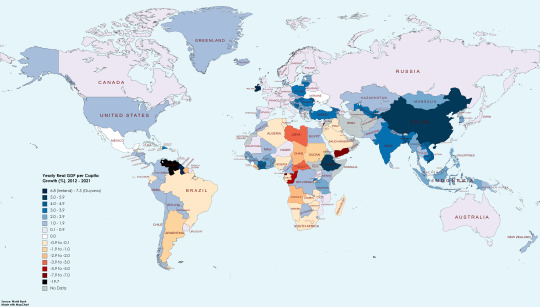
Ten Years of Global Economic Growth, 2012-2021.
by u/JoeFalchetto
77 notes
·
View notes
Text
measuring progress toward the circular economy
This article proposes a circularity index to measure how close various European countries are to a circular economy.
View On WordPress
2 notes
·
View notes
